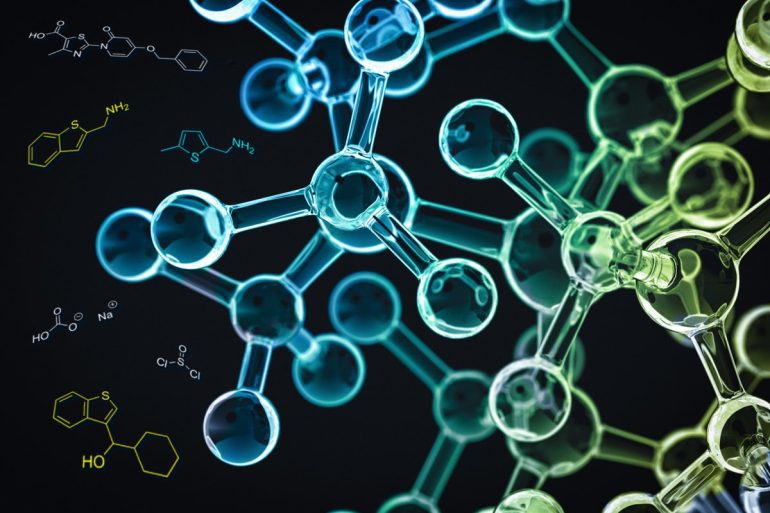- Swedish scientists employ AI to detect toxic chemicals from molecular structure alone.
- Methodology aims to reduce reliance on animal testing, enhancing efficiency and accuracy.
- Collaboration between Chalmers University of Technology and the University of Gothenburg yields groundbreaking AI approach.
- AI-driven model proves superior to conventional computational tools, offering precise toxicity predictions.
- Open accessibility of AI program through Trident service facilitates widespread adoption and collaboration.
- Transformers, originally designed for language processing, play a pivotal role in AI-driven chemical analysis.
Main AI News:
In a groundbreaking development, Swedish scientists have pioneered a method employing artificial intelligence (AI) to discern toxic chemicals solely from their molecular makeup. This innovation promises to revolutionize chemical safety assessment, potentially mitigating the need for extensive animal testing while ensuring the protection of human health and the environment.
From household items to industrial compounds, chemicals permeate every aspect of modern life. However, their ubiquitous presence poses significant risks as they infiltrate water sources and ecosystems, posing threats to both environmental sustainability and human well-being.
Despite regulatory efforts and reliance on animal testing to gauge chemical safety, concerns persist over the efficacy of these measures. In the European Union alone, millions of animals are subjected to testing annually to meet regulatory standards.
The collaborative efforts of researchers from Chalmers University of Technology (CTH) and the University of Gothenburg have yielded a groundbreaking AI methodology. By harnessing vast datasets and leveraging machine learning algorithms, this approach enables swift and cost-effective identification of toxic chemicals based solely on their molecular structure.
“Our AI-driven method has the capability to predict the toxicity of substances with remarkable accuracy, drawing from extensive data collected from prior laboratory experiments,” explains lead researcher Mikael Gustavsson.
According to Professor Erik Kristiansson, the sheer volume of chemicals in circulation necessitates innovative solutions. Traditional methods, including animal testing, fall short in assessing the safety profiles of these myriad substances. Herein lies the significance of the AI approach, offering a viable alternative for comprehensive toxicity assessment.
This cutting-edge methodology holds immense promise for various stakeholders, including regulatory bodies, environmental agencies, and industries engaged in chemical development. Recognizing its potential impact, the research team has made their AI program openly accessible through the Trident service, facilitating widespread adoption and collaboration.
ChatGPT: Revolutionizing Chemical Analysis
In the realm of chemical analysis, computational tools play a pivotal role in identifying toxic substances. However, existing methodologies often exhibit limitations in accuracy and applicability. In a recent study titled ‘Transformers enable accurate prediction of acute and chronic chemical toxicity in aquatic organisms,’ published in Science Advances, researchers unveiled an AI-driven approach that outperforms conventional computational tools.
“Our findings underscore the transformative potential of AI in chemical toxicity prediction. With continued advancements and the expansion of available data, AI methodologies are poised to redefine the landscape of chemical safety assessment,” remarks Professor Kristiansson.
Moreover, the adoption of AI systems holds the promise of substantially reducing reliance on laboratory tests, thereby curbing costs and minimizing animal testing. This paradigm shift aligns with broader efforts towards ethical and sustainable scientific practices.
At the heart of this pioneering methodology lie transformers, deep-learning AI models originally designed for language processing. Leveraging the capabilities of transformers, such as ChatGPT, researchers have unlocked new frontiers in chemical analysis. These models exhibit unprecedented efficacy in extracting insights from complex molecular structures, enabling precise identification of toxicity-inducing properties.
Conclusion:
The integration of artificial intelligence into chemical toxicity detection marks a significant advancement in safety assessment methodologies. By offering a more efficient, accurate, and ethically sound alternative to traditional testing methods, AI-driven approaches have the potential to reshape the market landscape. Companies involved in chemical development and regulatory compliance are poised to benefit from enhanced efficiency, reduced costs, and improved environmental stewardship. Embracing these transformative technologies will be crucial for staying competitive and ensuring sustainable practices in the chemical industry.

